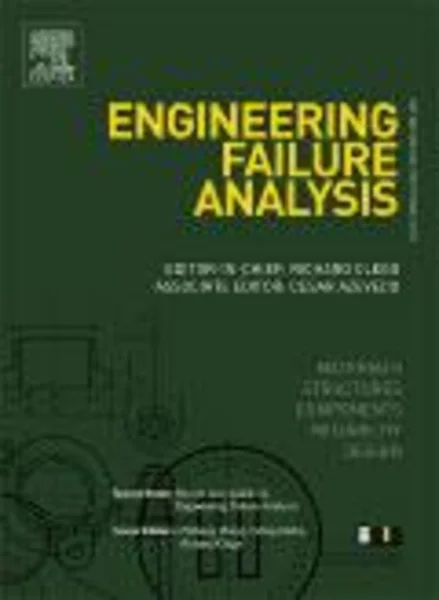-
thermal fatigue failure of fuel spray bars of a jet engine afterburner
جزئیات بیشتر مقاله- تاریخ ارائه: 1390/01/01
- تاریخ انتشار در تی پی بین: 1390/01/01
- تعداد بازدید: 601
- تعداد پرسش و پاسخ ها: 0
- شماره تماس دبیرخانه رویداد: -
afterburning or reheating is one the methods to periodically augment the basic thrust of the turbojet engines. it increases the thrust by adding fuel to the exhaust gases after they have passed through the turbine section. at this point there is still much uncombined oxygen in the exhaust. the resultant increase in the temperature raises the velocity of the exiting gases and therefore boosts engine thrust. most afterburners will produce an approximate 50% thrust increase, but with a corresponding threefold increase in fuel flow. since the specific and actual fuel consumption is considerably higher during the time the engine is in afterburning or ‘‘hot” operation, as compared to the non-afterburning or ‘‘cold” mode of operation, reheating is used only for the time-limited operation of takeoff, climb, and maximum bursts of speed. fig. 1 shows a simple afterburner schematic. it consists of the following components: (i) engine or turbine-driven afterburner fuel pump, (ii) afterburner fuel control, (iii) pressurizing valve—if multistage operation is possible, (iv) spray bars, (v) torch igniter and or ignition system, (vi) flame holders, (vii) variable-area exhaust nozzle, (viii) connections (mechanical and pressure) from main fuel control.
مقالات جدیدترین رویدادها
-
استفاده از تحلیل اهمیت-عملکرد در ارائه الگوی مدیریت خلاقیت سازمانی و ارائه راهکار جهت بهبود
-
بررسی تاثیر ارزش وجوه نقد مازاد بر ساختار سرمایه شرکت های پذیرفته شده در بورس اوراق بهادار تهران
-
بررسی تأثیر سطح افشای ریسک بر قرارداد بدهی شرکت های پذیرفته شده در بورس اوراق بهادار تهران
-
بررسی تأثیر رتبه بندی اعتباری مبتنی بر مدل امتیاز بازار نوظهور بر نقد شوندگی سهام با تأکید بر خصوصی سازی شرکت ها
-
تأثیر آمیخته بازاریابی پوشاک ایرانی بر تصویر ذهنی مشتری پوشاک ایرانی (هاکوپیان)
-
نگرشی به جلوه های سنت خانه های تهران عهد قاجار با تاکید بر فضاهای ورودی
-
بررسی عوامل موثر بر زنجیره تأمین تاب آور (مطالعه موردی: شرکت چینی بهداشتی مروارید یزد)
-
تحلیل اثرات فرهنگ سازمانی بر فرسودگی شغلی کارکنان و ارائه راهکارهای مناسب (بر اساس مدل دنیسن)
-
nonlinear systems with singular vector ϕ-laplacian under the hartman-type condition
-
hybrid neural networks as tools for predicting the phase behavior of colloidal systems
مقالات جدیدترین ژورنال ها
-
مدیریت و بررسی افسردگی دانش آموزان دختر مقطع متوسطه دوم در دروان کرونا در شهرستان دزفول
-
مدیریت و بررسی خرد سیاسی در اندیشه ی فردوسی در ادب ایران
-
واکاوی و مدیریت توصیفی قلمدان(جاکلیدی)ضریح در موزه آستان قدس رضوی
-
بررسی تاثیر خلاقیت، دانش و انگیزه کارکنان بر پیشنهادات نوآورانه کارکنان ( مورد مطالعه: هتل های 3 و 4 ستاره استان کرمان)
-
بررسی تاثیر کیفیت سیستم های اطلاعاتی بر تصمیم گیری موفق در شرکتهای تولیدی استان اصفهان (مورد مطالعه: مدیران شرکتهای تولیدی استان اصفهان)
-
تاثیر تغییرات اقلیمی بر اکوتوریسم شهر خرم آباد
-
ارزیابی تأثیر آموزش تمدد اعصاب (ریلکسیشن) بر بیماری های روانی و کاهش استرس در زنان
-
خوانش هویت شهری با تأکید بر ارزش های فرهنگی نهفته در خاطرات-جمعی شهروندان (مطالعۀ موردی: شهر بجنورد)
-
بررسی اثر رفتار سرمایه گذاران بر رابطه بین ثبات مدیریتی و ارتباطات سیاسی در شرکت های پذیرفته شده در بورس اوراق بهادار تهران
-
بررسی رابطه سبک رهبری توزیعی مدیران با عملکرد شغلی کارکنان بانک ملی استان آذربایجان غربی




سوال خود را در مورد این مقاله مطرح نمایید :